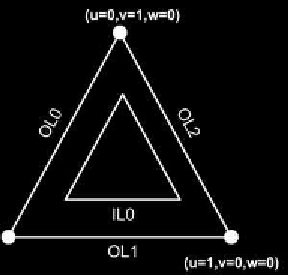Graphics Reference
In-Depth Information
Outer and Inner Division Levels
While we have seen that the outer and inner division
levels represent the number of divisions of the boundary
and interior of a primitive, respectively, we should look at
this in a litle more detail. The outer level is set by a four-
element floating point array, while the inner level is set
by a two-element floating point array. These are han-
dled diferently by the output interpolation paterns as
follows.
4
For the quad output interpolation patern, the divi-
sion levels are shown in Figure 13.3. The key point in
the figure is the sequence in which the outer level (
OL0
,
OL1
,
OL2
,
OL3
) and the inner level (
IL0
,
IL1
) elements are
applied.
The triangle output inter-
polation is specified in terms of barycentric coordi-
nates. This coordinate system gives a unique repre-
sentation for any point in terms of three coordinates
(
u
,
v
,
w
), as described in Figure 13.4.
For the triangles interpolation patern, the
division levels are shown in
Figure 13.5. The key point in the
figure is the sequence in which
the outer level (
OL0
,
OL1
,
OL2
) and
the inner level (
IL0
) elements are
applied. (The components that are not used are not shown
in the vectors and need not be set.)
For the isolines patern, the division levels are shown
in Figure 13.6. The outer level has only two values (
OL0
,
OL1
), and the inner level is not used at all. Again, the com-
ponents that are not used need not be set. If
OL0
is set
to 1, only a single curve will be drawn. Essentially,
OL0
determines how many isolines are to be drawn, while
OL1
determines how many components are to be in each iso-
line.
Figure 13.3.
The division levels for
the quad output interpolation.
Figure 13.4
. Barycentric
coordinates in a triangle.
Figure 13.5.
The division levels for
the triangles output interpolation.
4.
In the interest of not making you run away screaming from excruciating detail, we discuss what the
tessellation levels mean only in very general terms. It is easiest to get a feel for what this actually
means by experimenting with the example code. The full (excruciating) detail can be found in the
OpenGL speciication at htp://opengl.org → Documentation → Speciications → OpenGL 4.2 core
specification, in the tessellation section. Don't say we didn't warn you.





